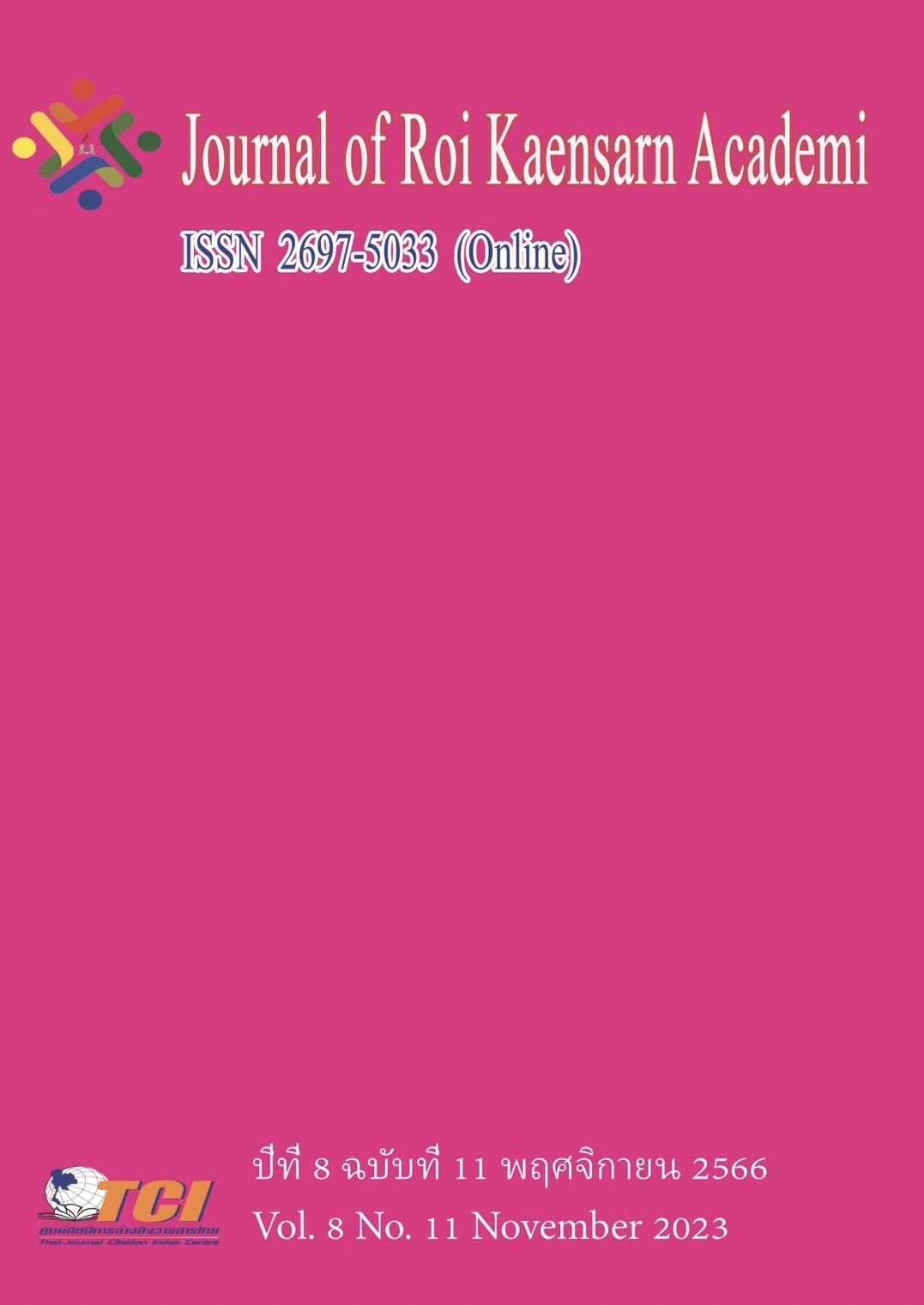Servicescape that Affect the Revisiting Intention to Thai Homestay
Main Article Content
Abstract
The aims of this study were to 1) examine the structural equation model analysis of servicescape affecting the revisiting intention of Thai homestays and 2) investigate the servicescape that is critical to the development of Thailand's homestay communities and leads to tourists' intent to return to homestays. 535 Thai tourists who stayed in homestays that complied with the Department of Tourism's Thai homestay standard across the country made up the sample group for this survey study. Paper-based and online questionnaires via Google Forms were both employed in the analysis. Descriptive statistics, confirmatory factor analysis (CFA), and structural equation model (SEM) were used to assess quantitative data. The consistency index was appropriate, and the CFA meets the requirements for both validity and reliability. The findings concluded that: 1) The structural equation model of the servicescape influencing revisiting intention to visit Thai homestays was well suited with the corresponding indexes according to the specified criteria (Relative Chi-Square (χ2/df) = 3.389, GFI = .901, RMR = .038, RMSEA = .067, CFI = .928); and 2) The servicescape is essential to the development of Thailand's homestay community to lead tourists' revisiting intention to the homestay, is an ambient condition. It produces a hedonic experience and leads to satisfaction, leading to the revisiting intention of the homestay. Nevertheless, a physical signal was not statistically significant. This study will assist the homestay industry build and enhance essential servicescape to increase tourism income for the communities and the country.
Article Details
References
กรมการท่องเที่ยว. (2558). มาตรฐานโฮมสเตย์ไทย. กรุงเทพมหานคร: โรงพิมพ์แห่งจุฬาลงกรณ์มหาวิทยาลัย.
กรมการท่องเที่ยว. (2562). รายชื่อโฮมสเตย์ที่ได้รับการรับรองมาตรฐานโฮมสเตย์ไทยและมาตรฐานโฮมสเตย์อาเซียน. เอกสารรายงาน. 23 มกราคม 2562. กรุงเทพมหานคร: กรมการท่องเที่ยว.
กองบรรณาธิการไทยรัฐออนไลน์. (2565). เปิดประสบการณ์ใหม่เที่ยว “เมืองรอง” ททท.กระตุ้นคนไทยเที่ยวกระจายทั่วประเทศ. ออนไลน์. สืบค้นวันที่ 20 ธันวาคม 2565. แหล่งที่มา: https://www.thairath .co.th/money/economics/thailand_econ/2453760
สำนักงบประมาณของรัฐสภา. (2564). ข้อเสนอแนวทางการส่งเสริมท่องเที่ยว เมืองรอง เพื่อกระจายรายได้จากการท่องเที่ยว. กรุงเทพมหานคร: สำนักการพิมพ์ สำนักงานเลขาธิการสภาผู้แทนราษฎร.
สำนักงานสภาพัฒนาการเศรษฐกิจและสังคมแห่งชาติ. (2565). แผนพัฒนาเศรษฐกิจและสังคมแห่งชาติ ฉบับที่ 13. ออนไลน์. สืบค้นวันที่ 19 ธันวาคม 2565. แหล่งที่มา: https://www.nesdc.go.th/ewt_news .php?nid=13651&filename=develop_issue
Alfakhri, D., Harness, D., Nicholson, J., & Harness, T. (2018). The role of aesthetics and design in hotelscape: A phenomenological investigation of cosmopolitan consumers. Journal of Business Research, 85, 523–531.
Baker, J. (1986). The role of the environment in marketing services: The consumer perspective. In J. Czepiel, C. Congram, & J. Shanahan (Eds.), The services challenge: Integrating for competitive advantage (pp. 79–84). Chicago: American Marketing Association.
Barker, R. G. (1968). Ecological psychology: Concepts and methods for studying the environment and human behavior. Palo Alto, CA: Stanford University Press.
Bitner, M. J. (1992). Servicescapes: The impact of physical surroundings on customers and employees. Journal of Marketing, 56(2), 57.
Booms, B. H., & Bitner, M. J. (1981). Marketing strategies and organization structures for service firms. In W. R. Donnelly, J. H. & George (Ed.), Marketing of Services (pp. 47–51). Chicago: American Marketing Association.
Diamantopoulos, A. & Siguaw, J. A. (2000). Introduction to LISREL: A guide for the uninitiated. London: SAGE Publications, Inc,.
Fornell, C., & Larcker, D. F. (1981). Evaluating structural equation models with unobservable variables and measurement error. Journal of Marketing Research, 18(1), 39-50.
Hair, J. F., Black, W. C., Babin, B. J., & Anderson, R. E. (2010). Multivariate data analysis: A global perspective. Upper Saddle River, New Jersey: Pearson Prentice Hall.
Hair, J. F., Black, W. C., Babin, B. J., Anderson, R. E., & Tatham, R. L. (2006). Multivariate data analysis. (6th ed.). New Jersey: Prentice Hall.
Hair, J. F., Ringle, C.M. & Sarstedt, M. (2011). PLS-SEM: Indeed a silver bullet. Journal of Marketing Theory and Practice, 19(2), 139–152.
Han, J. F., Kang, H. J., & Kwon, G. H. (2018). A systematic underpinning and framing of the servicescape: Reflections on future challenges in healthcare services. International Journal of Environmental Research and Public Health, 15(3), 509.
Kajalo, S., & Lindblom, A. (2015). Market orientation, entrepreneurial orientation and business performance among small retailers. International Journal of Retail and Distribution Management, 43(7), 580–596.
Likert, R. (1961). New Pattern of Management. New York: McGraw – Hill.
Miao, L. (2011). Guilty pleasure or pleasurable guilt? Affective experience of impulse buying in hedonic-driven consumption. Journal of Hospitality and Tourism Research, 35(1), 79–101.
Nunnally, J., & Bernstein, I. (1994). Psychometric Theory. (3rd ed.). New York: McGraw-Hill.
Schumacker, R. E. & Lomax, R. G. (2010). A beginner’s guide to structural equation modeling. (3rd ed.). New Jersey: Lawrence Erlbaum Associates.
Väisänen, H.-M., Uusitalo, O., & Ryynänen, T. (2023). Towards sustainable servicescape: Tourists’ perspectives of accommodation service attributes. International Journal of Hospitality Management, 110, 1-15.

